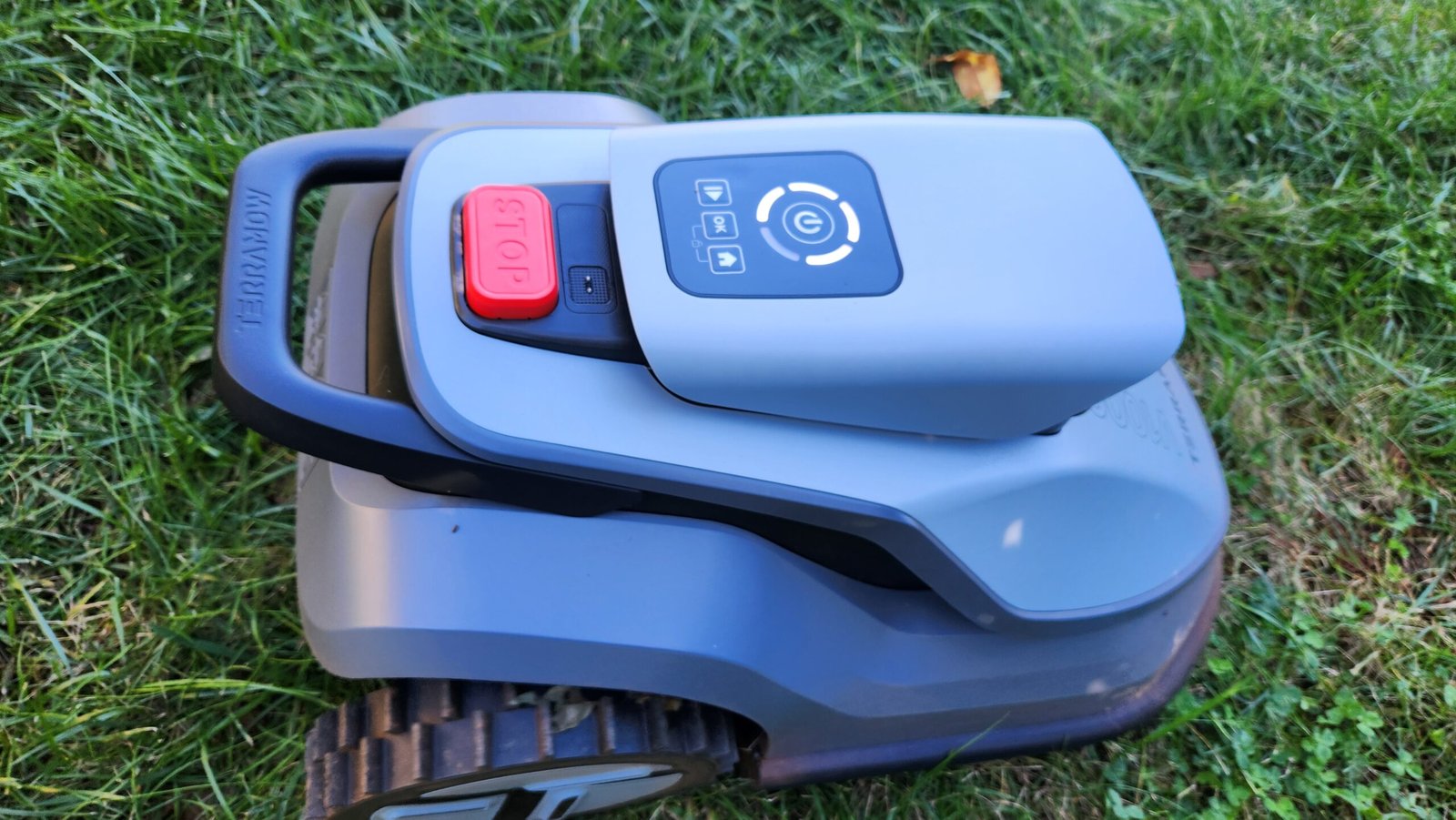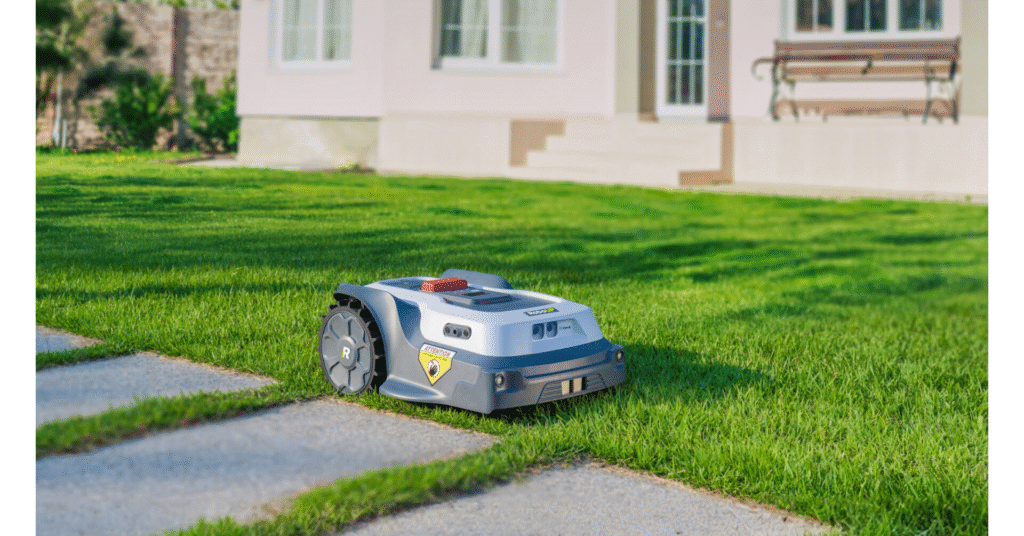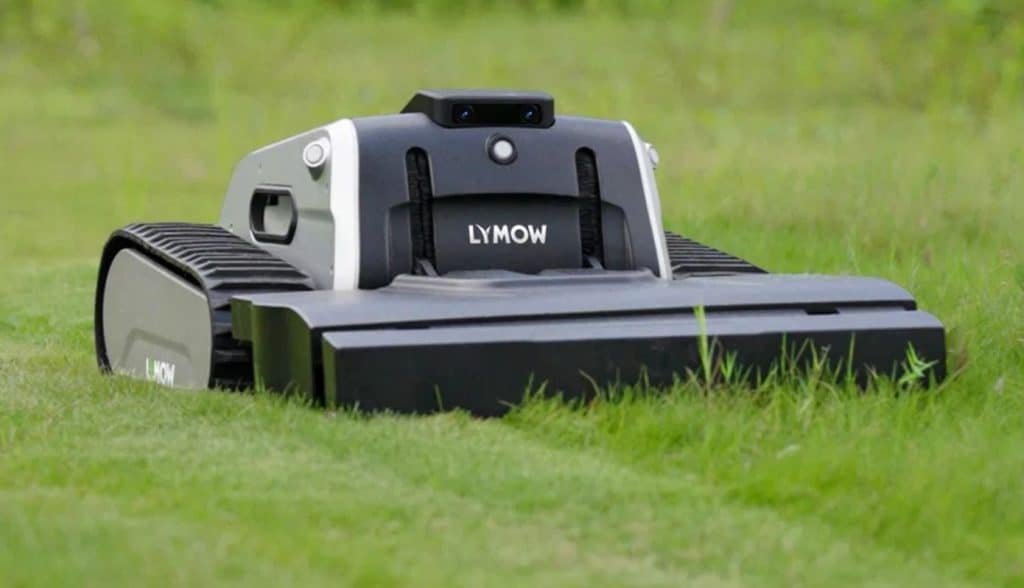The TerraMow V1000 runs at a whisper-quiet 54 dB. This makes it the quietest robot mower I’ve tested. The compact machine comes packed with innovative AI technology that directs it through challenging lawn layouts without needing boundary wires.
My evaluation of the TerraMow V1000’s specs revealed impressive capabilities. The mower knows how to tackle inclines up to 33% (18°) and runs for 150 minutes on a single charge. My detailed review showed this mower offers great value for smaller lawns up to 1/2 acre, though it worked great on my larger property too. The price becomes more attractive given its advanced obstacle detection and avoidance features, which beat many premium competitors in my tests.
The machine excels at precise edge-to-edge cutting and tight space maneuvering. These features proved invaluable in my yard’s complex layout. The robot’s autonomous area determination might not match everyone’s priorities, which stands as its main limitation.
Let me share my hands-on experience with this innovative mower. You’ll learn if its AI mapping and obstacle avoidance features make it the perfect fit for your lawn care needs.
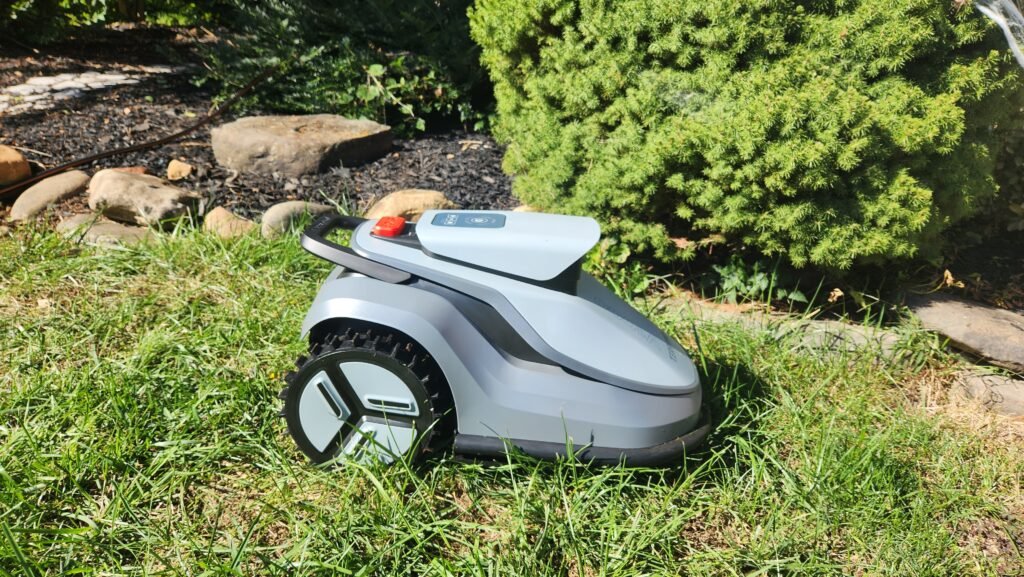
TerraMow V1000 Specs and Setup Overview
The TerraMow V1000 robotic mower came in a surprisingly compact package. I’ve put this sleek machine through its paces on my lawn these past few weeks. Let me share what I learned about its capabilities and real-world performance.
Cutting Width and Height Range
The V1000’s cutting disc spans 8″. This width might seem smaller than other models, but it turned out to be a blessing. The mower easily guides itself through tight spots and handles complex garden layouts better.
The mower lets you set grass heights from 1″-3″. You can adjust these settings through the app in 5mm steps. This range worked great as I kept my grass longer during dry summers and shorter in spring growth periods.
The V1000 handles slopes up to 33% (18°). My 1-acre property has quite a few slopes, but this little machine handled them without missing spots. The older S-Series models could tackle 36% (20°) inclines, but this small difference didn’t matter much in daily use.
Battery Capacity and Runtime
A robust 4.5 Ah / 98.55 Wh battery powers the V1000. My tests showed it runs for about 150 minutes per charge, matching what the manufacturer promised.
The mower covers 250-375 m² on each charge, depending on grass conditions. One test run showed it mowed about 1/20 acre in 2 hours. It went back to charge with 13% battery left.
A full recharge takes about 120 minutes. This worked well with my lawn’s needs. The mower could finish one section, recharge, and move on to the next area throughout the day.
What’s in the Box: Garage, Blades, and More
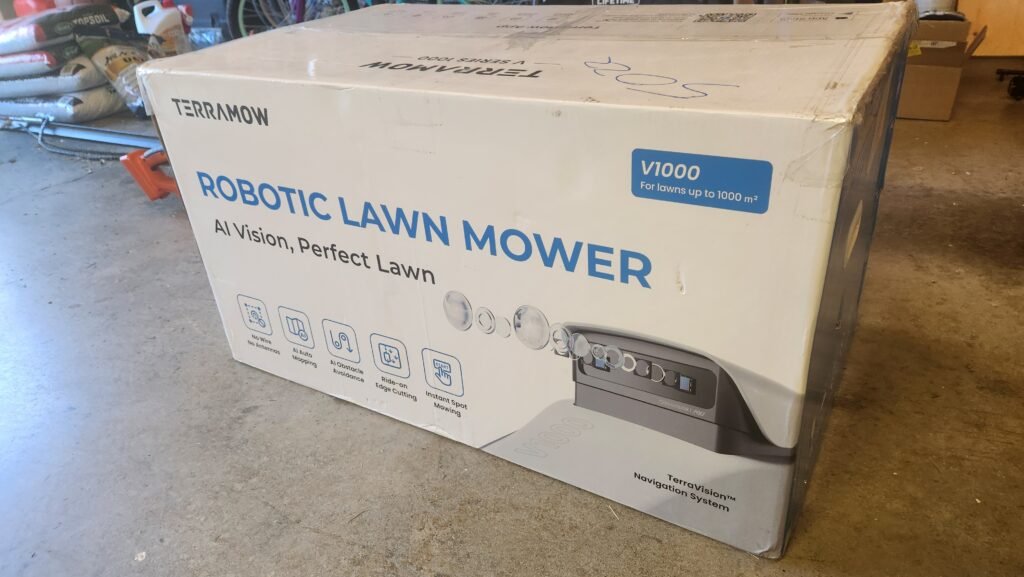
The V1000 comes ready to work right out of the box. Here’s what I found inside:
- V1000 Robot Mower
- Base Station with protective garage/canopy
- Power adapter with 10-meter cable
- Blade kit containing 9 replacement blades
- Base station screw kit for secure installation
- User manual and quick start guide
The nine extra blades saved me money since I didn’t need to buy replacements for months. The protective garage keeps the charging station safe from bad weather.
Setup took just five minutes. This beats the old boundary wire systems that could eat up hours of your time. The quick start guide made everything clear, and the detailed manual helped me get the best performance.
The mower weighs 26 pounds – solid but still easy to move around. Its size (24 x 16 x 13 inch) makes storage simple while staying sturdy enough for rough ground. The IPX6 water resistance rating means rain won’t stop it – I’ve seen this firsthand during several unexpected showers.
AI Vision Mapping: How TerraVision 2.0 Works
TerraVision 2.0 powers the TerraMow V1000’s impressive navigation abilities. I tested this system on my property and learned how this advanced AI vision technology works on the ground.
Triple-Camera System Explained
The V1000’s “eyes” come from TerraVision 2.0’s sophisticated triple-camera setup. This system includes:
- Two stereo 3D cameras that calculate distances between the mower and objects around it
- One semantic AI camera that captures environmental details down to each pixel
These cameras create a detailed vision system that goes beyond traditional navigation methods. The V1000 uses visual processing to understand its surroundings, unlike mowers that depend on GPS.
This system stands out because of its hybrid fusion approach. The 3D perception technology captures shapes and distances, then combines them with the semantic camera’s object recognition abilities. The mower creates detailed models of your lawn and recognizes every object at the same time.
TerraVision’s perception abilities shine—it delivers 98X higher point density and 400X more information than standard LiDAR or ToF systems. It can spot obstacles as small as 10×10×5cm with amazing accuracy.
Mapping Accuracy on a 1-Acre Lawn
My acre-sized property showed the system’s strengths and limits. The mower first explores your lawn by itself to create a detailed map. This took just over an hour for a 250 square meter section.
Larger areas need more time to map but stay accurate. My 1-acre property needed several mapping sessions since the system works best for lawns up to 1000㎡ (0.25 acre). The V1000 still did great beyond its recommended size and created detailed maps of every contour and obstacle.
The mower uses a biomimetic neural vision positioning system that works like human navigation. It spots landmarks (such as ground fixtures or unique plants) to stay on course. This works great in shady spots where GPS mowers usually have trouble.
The continuous map updating feature really impressed me. The V1000 updates its understanding of your lawn each time it mows. Seasonal changes or moved objects don’t throw off the system because of this adaptive feature.
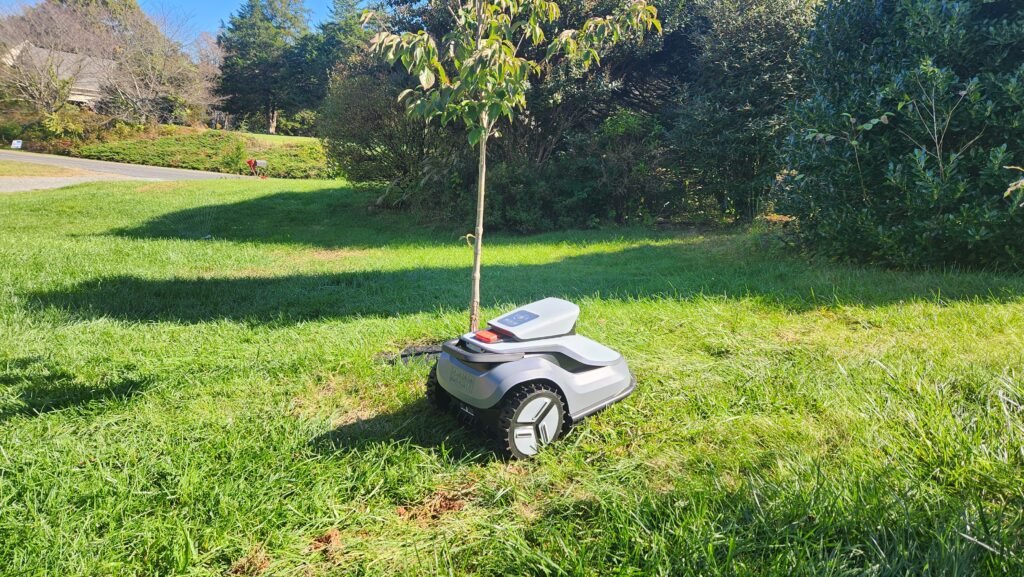
Virtual Zones and No-Go Areas
The V1000’s improved zone management sets it apart from older models. Previous TerraMow models needed physical markers like barrier tape and cones for restricted areas. Now you can mark these zones through the app.
Creating virtual exclusion zones works naturally—you can pause mapping and draw various shapes (rectangles, circles, or ellipses). This helped me protect flower beds and other sensitive areas from the mower.
My property’s tree line needed complex boundaries, so I created connected virtual fencing segments that followed natural contours. The system never forgets these boundaries between sessions.
The V1000 also has dedicated “grass cutting zones” that help with uneven grass quality. These zones let the mower optimize its pattern for better results instead of getting confused by dirt patches or thin grass.
TerraVision 2.0 brings major improvements to robotic mower intelligence by using visual processing instead of external guides or boundary wires to navigate.
App Features and Customization Options
The TerraMow V1000’s companion app serves as the command center that controls all mower operations. After testing every feature for weeks, I found the accessible interface packed with powerful capabilities.
Cutting Height, Speed, and Path Settings
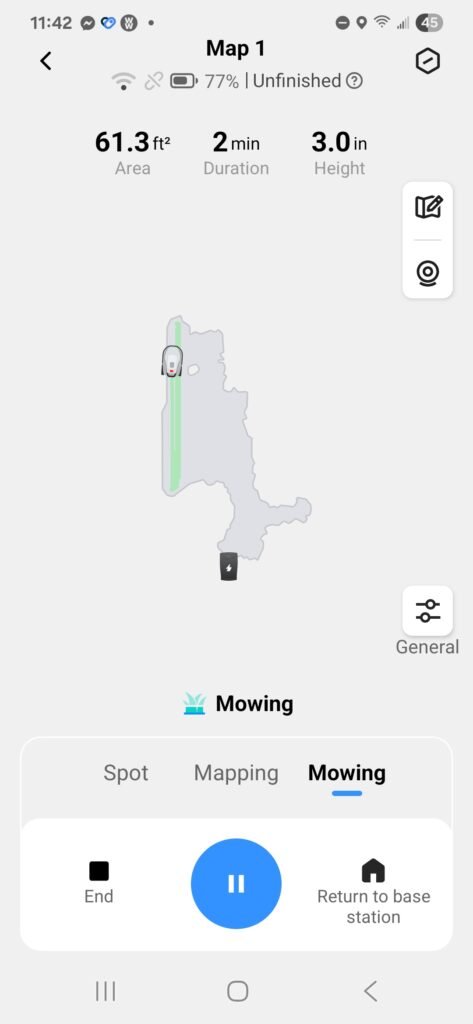
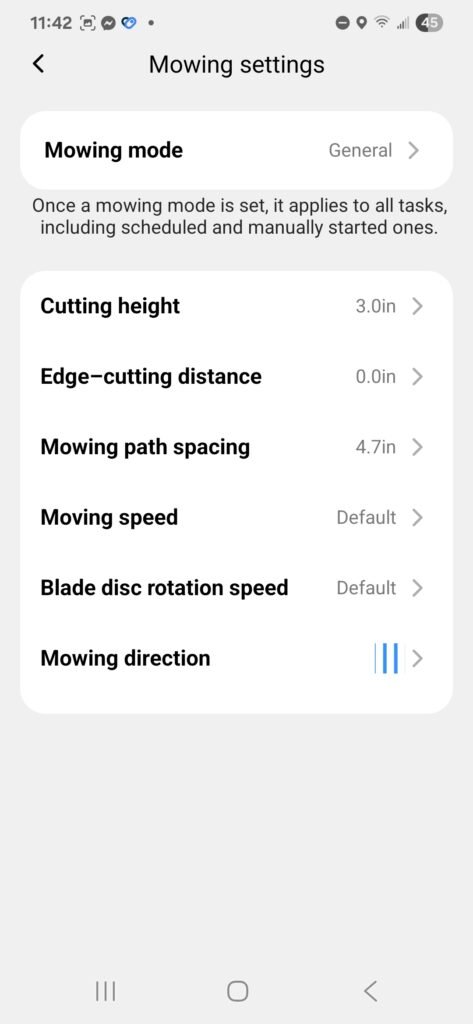
The app gives you precise control over all cutting parameters. A simple slider interface lets me adjust the cutting height from 25mm to 75mm (1″-3″). The granular control over mowing path spacing impressed me the most. It allows adjustments between 8-14cm that match different grass densities.
The app features three speed options: Fine, Standard, and Fast. A recent update added an “Adaptive Speed” mode. The mower automatically slows down in thicker grass patches, which improved the cut quality in my lawn’s dense areas.
You can select specific mowing angles that create different visual patterns. The blade rotation speed adjusts between slow and fast settings. This gives you control over noise levels and cutting intensity.
Live Camera Feed and Remote Control
The app’s most innovative feature lets you see what the mower sees through a live camera feed. I tap “activate” and “start use” to get up-to-the-minute data analysis. This feature proved useful not just to monitor mowing progress but also as an impromptu security camera during my absence.
The remote control function helps navigate manually when needed. A recent firmware update added “Remote Stuck Recovery”. Now I can free the mower without physical retrieval when it encounters difficult terrain.
Multi-Zone Management and Scheduling
The multi-zone management capabilities proved valuable for my complex lawn layout. You can create separate zones with unique settings for each area. Each section can have different cutting heights, speeds, and mowing frequencies.
Recent updates enhanced the scheduling system. It now shows clearer schedule views with loop icons for recurring tasks. The frequency-based scheduling lets you set fixed mowing schedules for entire maps or specific zones. Edge-only mowing schedules help maintain crisp boundaries without full lawn cuts.
The system works with both 2.4GHz and 5GHz Wi-Fi networks. Optional 4G connectivity costs $19 annually with the first year free when Wi-Fi coverage falls short.
Mowing Performance and Edge Handling
The systematic cutting pattern of the TerraMow V1000 stands out as one of its best features. My lawn looks perfectly groomed with straight lines after each pass.
Edge Cutting Modes and Limitations
The V1000’s edge cutting abilities are a huge step up from older models. The app lets me adjust the cutting overlap by ±6 in. This helps the mower reach my lawn’s edges when possible. The latest firmware update (v8.3.121) brought “Corner retouch”. This feature makes extra passes around corners that give better results but takes longer to finish mowing.
The 9 inch cutting disk sits in the middle of the 16 inch wide body. This creates a 4 in gap on each side. You’ll notice this gap most at ground transitions without wide mowing edge stones. The “segmented edge-cutting settings” feature lets me set different behaviors for specific parts of my lawn’s boundary.
Handling Narrow Passages and Obstacles
The V1000 is no match for bulkier competitors when it comes to tight spaces. Its compact build helps it squeeze into tight corners and passages where bigger mowers can’t go. I’ve seen it back into narrow spots to catch more grass – something other mowers don’t do.
The TerraMow’s AI vision system spots and responds to everything from toys to branches. This keeps it running smoothly. You can set the “sensitivity for obstacles at the edge” to three different levels. Since it uses camera-based detection only, you can’t turn this feature off completely.
Comparison with Husqvarna and Eufy Models
Husqvarna models have a slightly more precise mowing pattern than the TerraMow V1000. But the V1000 works better than many other wire-free robotic mowers. Husqvarna uses a radar module that’s not as reliable in my tests. The TerraMow’s camera system spots obstacles more consistently.
The Eufy E15/E18 can spread into neighboring yards because of its grass detection. The TerraMow fixes this with a “map edge lock” feature that keeps the mowing boundary in check. The Eufy can’t work at night because it needs its cameras. But the TerraMow keeps working just as well in any lighting.
Battery Life, Noise Level, and Efficiency
Power efficiency plays a vital role in robotic mower evaluation, alongside performance and navigation capabilities. My tests of the TerraMow V1000 showed remarkable results in this area.
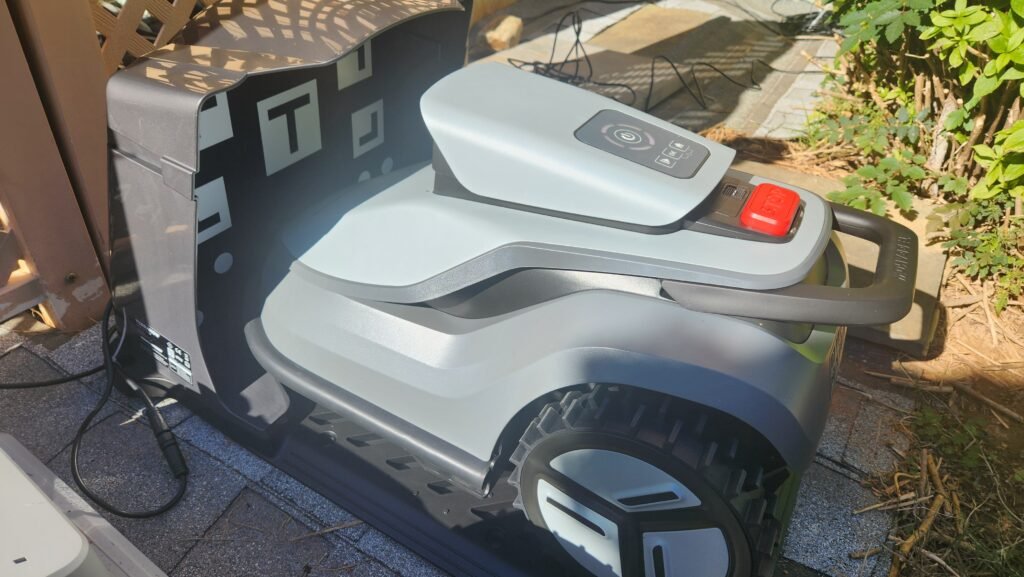
Runtime and Charging Time
The TerraMow V1000 comes with a 4.5 Ah / 98.55 Wh lithium-ion battery that provides steady power. Under ground conditions, the mower ran for 150 minutes on each full charge, which matched what the manufacturer promised. This let it cover 250-375 m² per charge, based on how thick the grass was and how complex the terrain got.
The mower headed back to its station with 13% battery life. It needed 120 minutes to charge fully before it could start mowing again—a fair trade-off given its long runtime.
Noise Test: 54 dB in Regular Use
The TerraMow V1000’s quiet operation caught my attention right away. The specs claimed noise levels below 54 dB, and my measurements at different distances proved this right. You can run this mower early morning or late evening since it’s quieter than people talking.
Energy Consumption for Weekly Mowing
The TerraMow V1000’s smart design keeps power usage low. My measurements showed it used about 4 kWh when mowing a 500 square meter lawn three times a week [link_1].
The numbers tell a clear story – mowing up to 2000 m² weekly costs just 0.5€ in power. That’s nowhere near what you’d spend on gas for traditional mowers. The mower’s quiet operation and low energy use make it an earth-friendly choice that saves money while protecting the environment.
Conclusion
My experience with the TerraMow V1000 over several weeks shows this robotic mower balances advanced technology and practical lawn care perfectly. The mower runs at a whisper-quiet 54 dB, which sets it apart from louder competitors. You can schedule mowing sessions early morning or evening without bothering your neighbors.
TerraVision 2.0’s camera-based system makes boundary wires obsolete and delivers precise navigation. The mower handled my property admirably, despite being designed for lawns up to 1/2 acre. Each charge provides 150 minutes of runtime, enough to cover 1/10 of an acre – perfect for most residential lawns.
The mower’s user-friendly app interface and extensive customization options impressed me most. Users gain unprecedented control through virtual no-go zones, electronic cutting height adjustments, and independent management of multiple lawn sections. The live camera feed proved valuable beyond just monitoring the mowing.
The V1000’s central blade placement somewhat limits edge cutting, yet it navigates tight spaces better than most competitors. The mower’s efficiency stands out – weekly mowing of up to 1/2 acre costs just $0.60 in electricity, far less than traditional gas mowers.
The TerraMow V1000 marks a major advancement in robotic lawn care. The higher price tag compared to other robot mower models reflects its wire-free operation, AI-powered navigation, and exceptional quietness. Homeowners looking for a hands-off solution that consistently delivers should give this mower a serious look. Lawn care’s future looks promising and runs quietly.
FAQs
Q1. How quiet is the TerraMow V1000 during operation? The TerraMow V1000 operates at a whisper-quiet 54 dB, making it one of the most silent robot mowers available. This low noise level allows for mowing at any time without disturbing neighbors.
Q2. What is the maximum lawn size the TerraMow V1000 can handle? The TerraMow V1000 is designed for lawns up to 1,000 square meters (about 0.25 acres). However, it has shown capability to handle larger areas, though it may require multiple sessions.
Q3. How does the TerraMow V1000 navigate without boundary wires? The TerraMow V1000 uses an advanced AI vision system called TerraVision 2.0, which includes a triple-camera setup. This allows the mower to create detailed maps of your lawn and navigate precisely without the need for traditional boundary wires.
Q4. Can the TerraMow V1000 handle slopes and uneven terrain? Yes, the TerraMow V1000 can handle slopes up to 33% (18°) incline. Its advanced navigation system allows it to maneuver effectively on varied terrain, including gentle inclines and uneven surfaces.
Q5. How long does the TerraMow V1000’s battery last on a single charge? The TerraMow V1000 has a runtime of approximately 150 minutes on a full charge. This allows it to cover between 250-375 square meters per charge, depending on grass density and terrain complexity.

